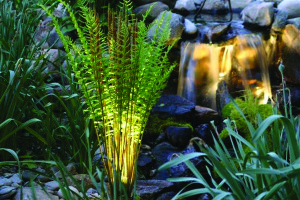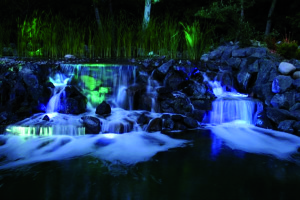THE 7 STEPS OF THE NITROGEN CYCLE
When starting a new tank (or pond) you must “cycle” your aquarium (pond).
The Seven Steps must be complete to cultivate the right bacteria in your filter system by allowing nature to take it’s course. Do not expect a tank or pond to be ready to introduce livestock as soon as you fill it with water. If you start off without a bacteria colony in your fitration system, you will need to do frequent water changes to bring the ammonia and nitrites to a safe level. The Nitrogen Cycle will be complete in about six weeks (+/- 2 weeks on average) to be complete.
There are seven steps in the Nitrogen Cyclce. Once your tank (pond) is fully cycled, your system will have the right biological and chemical balance for livestock.
Step 1: Waste from livestock (fish respiration, waste, plant waste) creates the ideal habitat for good bacteria. This is the start of the cycle. Most people start with a few very inexpensive fish in their pond or aquarium. Some people use a piece of shrimp to start the cycle in their aquarium
Step 2: Waste creates ammonia in the water (the water will look hazy). Ammonia is deadly toxic to livestock.
Step 3: Nitrosonomas bacteria consume Ammonia.
Step 4: Nitrosonomas bacteria produce Nitrites (convert Ammonia to Nitrites). Nitrites is deadly toxic to livestock.
Step 5: Nitrospira bacteria consume the nitrites and produce Nitrates (great plant fertilizer).
Step 6: When Nitrites are converted to Nitrates, the ammonia and nitrites will be equal to zero and nitrates will be less than 10 ppm. At this point the aquarium / pond is fully cycled and can support livestock. The pH may need to be adjusted to a neutral range during this process—adjust the pH slowly until it is in the desired range for your livestock.
Steps 7: Add fish slowly! You want to keep pace of the waste stream and keep the bacteria balanced so the ammonia and nitrite stay a zero! Nitrate is toxic over 30ppm–it is best to target keeping nitrates less than 10 ppm. You will need to do a 20% water change once per month or 10% every two weeks. You should also consider products to lower nitrates if water changes are less frequent. It’s a balance—fish and plant waste / water changes / filter media changes.
Happy Fish Keeping!

